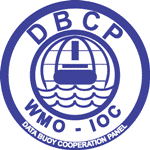
WMO-IOC Data Buoy Cooperation Panel
DBCP Technical Document No. 47
Presentations at the DBCP Scientific and Technical Workshop
Paris, France, 23 September 2013
 |
WMO-IOC Data Buoy Cooperation Panel Presentations at the DBCP Scientific and Technical Workshop Paris, France, 23 September 2013 |
|
Programme, presentations (and abstracts) made at the workshop
|
The Scientific and Technical Workshop preceding the annual Data Buoy Cooperation Panel (DBCP) meetings has become an important forum for stimulating discussion among data buoy operators, designers, and data users. The twenty-ninth session of the DBCP (DBCP-29) was organized the DBCP and hosted by the Intergovernmental Commission (IOC) of UNESCO in Paris, France. The interest and participation
of oceanographic and marine meteorological experts in the activities of
the DBCP continues to increase each year. The DBCP Scientific and
Technical Workshop presents an ideal opportunity for scientists,
operators, and manufacturers to relate their experiences, to exchange
knowledge, and to build on or learn from the innovations, developments
and good practices of their peers.
|
|
[1] Metocean, Canada [2] CLS, France [3] Pacific Gyre, USA [4] Atlantic Oceanographic and Meteorological Laboratory (AOML), National Oceanic and Atmospheric Administration (NOAA), USA [5] Office of Climate Observation (OCO), National Oceanic and Atmospheric Administration (NOAA), USA [6] Pusan National University, Republic Of Korea [7] Scripps Institution of Oceanography (SIO), USA [8] AXYS Technologies Inc., Canada [9] Rosenstiel School of Marine and Atmospheric Science, University of Miami, USA [10] Oceanographic Institute – University of São Paulo, Brazil [11] Surface Marine Operational Service (E-SURFMAR), Grouping of European Meteorological Services (EUMETNET) Economic Interest Grouping (EIG) [12] Metoffice, United Kingdom [13] Laboratoire d'Océanographie et du Climat (LOCEAN), Centre National de la Recherche Scientifique (CNRS), France [14] Laboratoire de Physique des Océans (LPO), Institut français de recherche pour l'exploitation de la mer (IFREMER), France [15] Laboratoire Atmosphères, Milieux, Observations Spatiales (LATMOS) / Mediterranean Institute of Oceanography (MIO), Centre National de la Recherche Scientifique (CNRS), France [16] National University of Ireland, Galway [17] Institut de Ciències del Mar (ICM), Consejo Superior de Investigaciones Científicas (CSIC), Barcelona, Spain [18] Meteorological Service of Canada (MSC), Environment Canada (EC) [19] National Institute of Ocean Technology, Ministry of Earth Sciences, India [20] Bayworld Centre for Research and Education, Cape Town, South Africa [21] Oceans and Coast, Department of Environmental Affairs, Cape Town, South Africa [22] Department of Oceanography, University of Cape Town, South Africa [23] Woods Hole Oceanographic Institution (WHOI), USA [24] Pacific Marine Environmental Laboratory (PMEL), National Oceanic and Atmospheric Administration (NOAA), USA [25] Sole-Proprietor, USA [26] Marlin Yug, Ukraine |